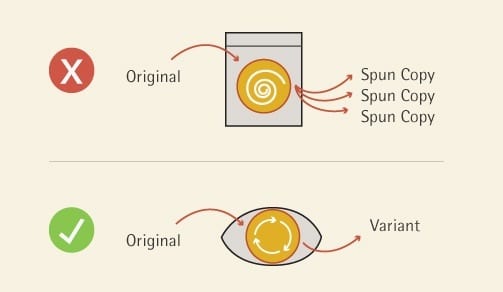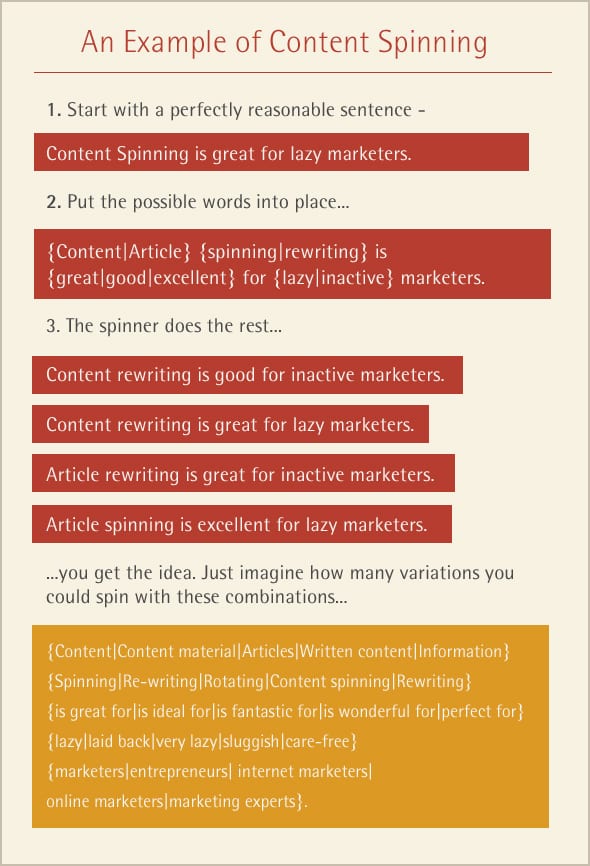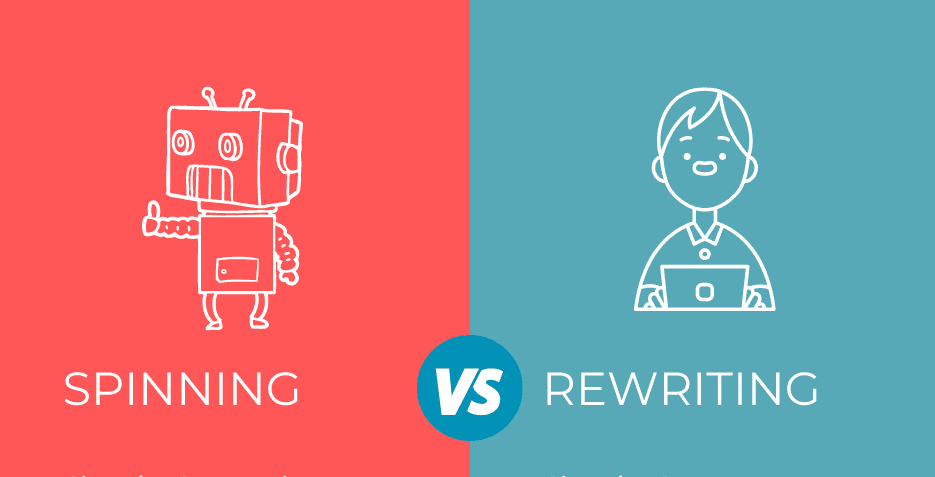Discover the secret technique of article spinning for creating unique and engaging content that will boost your online presence.

Image courtesy of via DALL-E 3
Table of Contents
Welcome to our discussion on article spinning! In this article, we will break down what article spinning is, how it works, and why some people use it to create content for the web. If you’re curious about writing and content creation online, you’re in the right place. Let’s dive in!
What is Article Spinning?
Article spinning is a technique used in writing where a piece of content is rephrased or rewritten in multiple ways to create different versions. It’s like taking an original text and putting it through a special machine that gives you back several variations of the same information. This can be helpful for creating more content in a short amount of time.
Why Do People Use It?
People use article spinning for various reasons. One of the main reasons is to save time. Instead of starting from scratch each time they need new content, they can spin existing articles to create something fresh. Additionally, some use article spinning to help with search engine optimization (SEO). By having multiple versions of the same content, they can target different keywords and reach a wider audience on the web.
How Article Spinning Works
Using Software
Article spinning works with the help of special software designed to take an original piece of text and create multiple versions of it. This software is like a magic tool that can change the words and structure of a sentence to make it look different from the original.
Making Different Versions
Once the software gets hold of the original text, it starts to spin it around. It rearranges words, swaps out synonyms, and even changes the sentence order to make a variety of versions of the same article. The goal is to produce many different articles that all say the same thing but in slightly different ways.
The Pros and Cons of Article Spinning
Article spinning has its advantages. One of the main benefits is that it can save time for writers. Instead of creating completely new content from scratch, article spinning software can generate multiple versions of an article in a much quicker time frame. This can be especially helpful for content creators who need to publish a large volume of articles regularly.
Another advantage of article spinning is its potential impact on Search Engine Optimization (SEO). By creating multiple versions of an article with different keywords and phrases, writers can target a wider range of search terms, potentially increasing the visibility of their content in search engine results.
Cons
Despite the benefits, article spinning also comes with drawbacks. One major downside is the quality of the spun content. Because article spinning software simply replaces words or phrases with synonyms, the resulting articles can often end up with awkward phrasing, grammar errors, and a lack of coherence. This can make the content difficult to read and understand for readers.
Additionally, there is a risk of the spun content being too similar to the original source material, leading to accusations of plagiarism or copyright infringement. This can damage the reputation of the website or individual using the spun content, as it can be seen as unethical or dishonest.
Ethical Considerations
When it comes to article spinning, there are a few ethical considerations that need to be addressed. Let’s dive into the key points.

Image courtesy of www.orbitmedia.com via Google Images
Is It Honest?
One of the main ethical dilemmas surrounding article spinning is whether it is considered dishonest. Some argue that using software to spin articles is a form of cheating, as it involves manipulating existing content to create something new. This raises questions about the originality and authenticity of the spun text.
Plagiarism Risks
Another ethical concern with article spinning is the risk of plagiarism. While the intention may be to create unique content, there is always a chance that the spun article ends up closely resembling the original text. This blurring of lines between original writing and copied content can lead to accusations of plagiarism.
Quality of Spun Articles
When articles are spun, they often contain grammar mistakes and errors that can make them hard to read. Imagine reading a paragraph where the words don’t make sense together or the sentences are jumbled up. This can happen when a computer program tries to change words in a text but doesn’t consider if the new words fit well in the sentence. So, spun articles can end up sounding strange or confusing.
Maintaining Flow
Another problem with spun articles is that they might not flow smoothly from one idea to the next. Imagine a story where the plot jumps around without a clear connection between events. Spun articles can have the same issue—the sentences or paragraphs might seem random or disconnected because the software is focused on swapping words rather than creating a coherent thought. This lack of flow can make it hard for readers to follow along and stay engaged.
Impact on Readers and Websites
When readers come across spun articles, they may not find them as engaging or interesting as original, well-written content. Since spun articles are often created solely for search engine optimization (SEO) purposes, they can lack the personal touch and creativity that captivate readers. This could result in lower user engagement and fewer people spending time on websites that use spun content.

Image courtesy of www.orbitmedia.com via Google Images
Website Trust
One crucial aspect of websites is building trust with their audience. However, when websites use spun articles, it can have a negative impact on their trustworthiness. Readers can easily spot low-quality, spun content, which may lead them to question the reliability and credibility of the website as a whole. To maintain trust and credibility, it’s essential for websites to prioritize original, high-quality content that adds value to the reader’s experience.
Alternatives to Article Spinning
One alternative to article spinning is creating original content. This means writing your own articles from scratch without using any spinning software. By writing original content, you can ensure that your work is unique and tailored to your own ideas and perspectives.
Hiring Professional Writers
Another alternative to article spinning is hiring professional writers to create high-quality content for you. Professional writers are experienced in crafting engaging and informative articles that are tailored to your specific needs. By outsourcing your content creation to skilled writers, you can ensure that your website features top-notch, original content that resonates with your audience.
Tips for Young Writers
One of the best tips for young writers is to practice writing regularly. Just like playing a sport or a musical instrument, writing skills improve with practice. The more you write, the better you will become at expressing your ideas clearly and creatively.

Image courtesy of www.vappingo.com via Google Images
Be Creative
Don’t be afraid to let your imagination run wild! Young writers should embrace their creative side and explore different ideas. Whether you’re writing a story, a poem, or even a blog post, let your unique voice shine through.
Do Your Research
Before you start writing, make sure to do your research. Whether it’s for a school project or a personal story, gathering information and facts will help make your writing more accurate and engaging. Research can also inspire new ideas and perspectives for your writing.
Conclusion
In this blog post, we have explored the concept of article spinning and delved into its various aspects. Article spinning is the process of using software to create multiple versions of an original piece of text. It is often used by people to quickly generate content for websites and blogs.
We have discussed how article spinning works, the pros and cons associated with it, ethical considerations, the quality of spun articles, and the impact on readers and websites. Additionally, we have highlighted some alternatives to article spinning, such as creating original content and hiring professional writers.
For young writers looking to create their own content, we have provided tips on the importance of practice, creativity, and research. By following these tips, young writers can improve their writing skills and produce high-quality content.
Overall, while article spinning may offer a quick way to generate content, it comes with ethical considerations and quality issues that can impact reader engagement and website trust. It is essential to prioritize originality and quality in content creation to build a strong online presence.
Want to turn these SEO insights into real results? Seorocket is an all-in-one AI SEO solution that uses the power of AI to analyze your competition and craft high-ranking content.
Seorocket offers a suite of powerful tools, including a Keyword Researcher to find the most profitable keywords, an AI Writer to generate unique and Google-friendly content, and an Automatic Publisher to schedule and publish your content directly to your website. Plus, you’ll get real-time performance tracking so you can see exactly what’s working and make adjustments as needed.
Stop just reading about SEO – take action with Seorocket and skyrocket your search rankings today. Sign up for a free trial and see the difference Seorocket can make for your website!
Frequently Asked Questions (FAQs)
Here are some common questions about article spinning:
Is article spinning illegal?
Article spinning itself is not illegal, but using it to plagiarize or copy content without proper attribution is against the law. It’s crucial to always create unique and original content to avoid any legal issues.
Do all websites use spun content?
No, not all websites use spun content. While some may resort to article spinning to save time or effort, many websites prioritize creating high-quality, original content to provide value to their readers and enhance their online presence.
Can I spot a spun article?
Identifying a spun article can be challenging, but there are a few signs to look out for. These include awkward sentence structures, grammatical errors, and inconsistencies in writing style. Additionally, using online tools like plagiarism checkers can help detect spun content.







